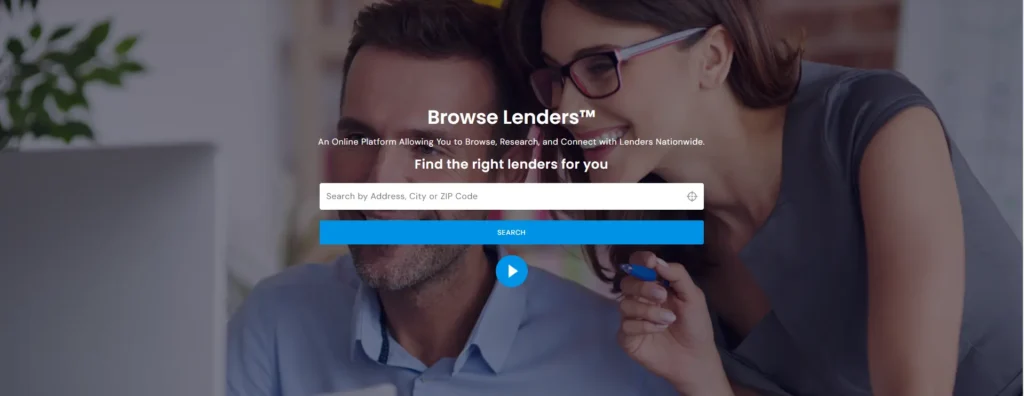What a Dispute Actually Means Inside the Credit System
Most consumers believe a dispute is a correction — a way to challenge an inaccuracy so their score goes up. But inside the credit system, a dispute is not treated as “a fix request.” It is treated as a credibility audit.
When you dispute an item, the system is not only reviewing the entry —it is reviewing you.
A dispute tells the system: “I disagree with the current interpretation of my behavior.”
Once you make that statement, the system must decide: Are you correcting an error — or attempting to reframe accountability?
This is why disputes are never neutral.
They either build credibility or damage credibility depending on timing, context, and pattern.
The public only sees the outcome: “Item removed” or “Item verified.”
But underwriting sees the message behind the attempt.
Most People Think a Dispute = Fixing a Problem.
Institutions See a Dispute = Measuring Your Judgment.
When consumers dispute using the wrong timing, wrong reasoning, or wrong structure, they accidentally demonstrate:
- Avoidance
- Instability
- Manipulation
- Lack of ownership
- Volatility
- Pressure
This is why credit repair companies that file mass disputes often lower institutional trust, even if they temporarily raise the score.
Because the dispute did not show responsibility — it showed distance from responsibility.
To the system, a dispute is not: “Something on my report is wrong.”
It is: “Here is how I handle conflict, accuracy, and accountability.”
Why the System Doesn’t Just Check Accuracy — It Checks Maturity
The dispute process exists for fairness — but the reaction to a dispute exists to evaluate maturity.
The question being asked behind the scenes is not: “Is this disputed item valid?”
It is: “Is this borrower demonstrating integrity and accuracy — or avoidance and positioning?”
This is why the credit system frequently verifies negative items even when documentation is weak — because the borrower’s intent signal matters as much as the documentation itself.
A dispute doesn’t just test the account.
It tests your credibility posture.
Why “Shotgun Disputes” Damage Trust
When someone disputes everything negative at once (the classic credit repair model), the system reads desperation and image manipulation — not correction.
The consumer thinks: “If I remove everything, I’ll look clean.”
The institution sees: “They are trying to erase accountability rather than demonstrate correction.”
That is why mass disputes often correlate with future defaults — not because the credit bureaus are psychic, but because the dispute strategy exposed a mindset of narrative management, not responsibility stability.
Why Timing Matters More Than Content
A dispute made during instability reads like evasion.
A dispute made after stability is already proven reads like maintenance.
Institutions are watching for sequence, not volume.
| Dispute Timing | Interpretation |
|---|---|
| During instability | Avoidance |
| Immediately after a negative event | Immaturity |
| After stability is documented | Credibility |
| After proactive correction | Integrity |
| After ownership | Readiness |
PART 1 — What a Dispute Actually Means Inside the Credit System
Most consumers believe a dispute is a correction — a way to challenge an inaccuracy so their score goes up. But inside the credit system, a dispute is not treated as “a fix request.” It is treated as a credibility audit.
When you dispute an item, the system is not only reviewing the entry —it is reviewing you.
A dispute tells the system: “I disagree with the current interpretation of my behavior.”
Once you make that statement, the system must decide: Are you correcting an error — or attempting to reframe accountability?
This is why disputes are never neutral.
They either build credibility or damage credibility depending on timing, context, and pattern.
The public only sees the outcome: “Item removed” or “Item verified.”
But underwriting sees the message behind the attempt.
Most People Think a Dispute = Fixing a Problem.
Institutions See a Dispute = Measuring Your Judgment.
When consumers dispute using the wrong timing, wrong reasoning, or wrong structure, they accidentally demonstrate:
- Avoidance
- Instability
- Manipulation
- Lack of ownership
- Volatility
- Pressure
This is why credit repair companies that file mass disputes often lower institutional trust, even if they temporarily raise the score.
Because the dispute did not show responsibility, it showed distance from responsibility.
To the system, a dispute is not: “Something on my report is wrong.”
It is: “Here is how I handle conflict, accuracy, and accountability.”
Why the System Doesn’t Just Check Accuracy — It Checks Maturity
The dispute process exists for fairness, but the reaction to a dispute exists to evaluate maturity. The question being asked behind the scenes is not: “Is this disputed item valid?”
It is: “Is this borrower demonstrating integrity and accuracy — or avoidance and positioning?”
This is why the credit system frequently verifies negative items even when documentation is weak — because the borrower’s intent signal matters as much as the documentation itself.
A dispute doesn’t just test the account.
It tests your credibility posture.
Why “Shotgun Disputes” Damage Trust
When someone disputes everything negative at once (the classic credit repair model), the system reads desperation and image manipulation — not correction.
The consumer thinks: “If I remove everything, I’ll look clean.”
The institution sees: “They are trying to erase accountability rather than demonstrate correction.”
That is why mass disputes often correlate with future defaults — not because the credit bureaus are psychic, but because the dispute strategy exposed a mindset of narrative management, not responsibility stability.
Why Timing Matters More Than Content
A dispute made during instability reads like evasion.
A dispute made after stability is already proven reads like maintenance.
Institutions are watching for sequence, not volume.
| Dispute Timing | Interpretation |
|---|---|
| During instability | Avoidance |
| Immediately after a negative event | Immaturity |
| After stability is documented | Credibility |
| After proactive correction | Integrity |
| After ownership | Readiness |
The item under dispute is not the real test.
Your decision-making is.
Why This Understanding Must Come Before Any Action
If a borrower disputes before they understand what a dispute represents, they almost always damage their institutional reading, which is far harder to undo later.
That’s why this deep dive sits in Box 1 — the “understanding” layer — not in the execution layer. You cannot responsibly use a dispute until you understand what it signals.
The dispute itself is not the risk.
Your relationship to responsibility is the risk.
The dispute is simply the evidence of that relationship.
When a Dispute Builds Credibility vs When It Damages It
Now that you understand what a dispute represents, we can break down when a dispute strengthens your profile — and when it does the opposite.
A dispute either communicates: “I am protecting the accuracy of my record” or “I am resisting accountability.”
The credit system is always deciding which of those two identities you are signaling.
1. A Dispute Strengthens Your Profile When…
A dispute helps you when it demonstrates governance and accuracy. Institutions look favorably on disputes that reflect responsibility rather than avoidance.
A dispute builds credibility when:
| Condition | Institutional Interpretation |
|---|---|
| The account is genuinely inaccurate | Borrower is protecting data integrity |
| The dispute occurs after stabilization | Dispute is part of maintenance, not panic |
| The tone reflects correction, not escape | Borrower is aligned with reliability |
| The dispute is targeted, not broad | Judgment is precise, not reactive |
| The borrower already demonstrates ownership | Behavior shows accountability posture |
| There is a pattern of low volatility | Dispute looks like refinement, not crisis |
In these conditions, a dispute becomes a signal of maturity — not resistance.
2. A Dispute Damages Your Profile When…
A dispute hurts you when it appears to be an attempt to rewrite history rather than to correct it.
A dispute reduces trust when:
| Condition | Institutional Interpretation |
|---|---|
| Multiple disputes at once | They’re trying to erase accountability |
| Disputes during financial stress | They are panicking or unstable |
| Disputes immediately after negative events | No ownership — only reaction |
| “Every negative item must go” behavior | They’re manipulating the record |
| Dispute-first, stabilize-later approach | They fix image before fixing behavior |
This is why the same dispute can help one borrower and hurt another — the context is what’s being scored, not the text.
3. The Sequence Rule: Why Order Matters More Than Content
The credit system reads timing as intent.
This is why the dispute must come after stability, not before.
| Borrower A | Borrower B |
|---|---|
| Stabilizes → THEN disputes | Disputes → THEN stabilizes |
| Looks credible | Looks avoidant |
| Score change = lasting | Score change = temporary |
| Interpretation = upgraded | Interpretation = downgraded |
The second borrower thinks: “I fixed things — why can’t I leverage it?”
Because the system learned more from the order of operations than from the dispute itself.
Sequence tells the story.
Stability gives the story weight.
4. What the System Is Actually Testing During a Dispute
When you dispute an item, the credit system is evaluating three things simultaneously:
| Test | What It’s Looking For |
|---|---|
| Accuracy Test | Should this item be on the report? |
| Intent Test | Why is the borrower disputing it now? |
| Maturity Test | What behavior does this dispute reflect? |
This is why the outcome is as much about you as it is about the record.
The bureau checks documentation; the institution checks character.
5. Why “Winning” a Dispute Does Not Always Improve the Middle Score
Many borrowers remove a negative item and still feel stuck — because they think outcome = deletion.
But institutions think outcome = interpretation.
If the dispute reveals:
- desperation
- instability
- evasion
- lack of ownership
- emotional decision-making
Then the middle score does not reward it — because the institution still sees the pattern, not the paperwork.
A deleted item without credibility = cosmetic improvement
A corrected item with stability = classification improvement
Only the second changes leverage.
6. The “Ownership Threshold” — The Real Turning Point
Before a dispute is resolved, the system subconsciously asks: “Has this borrower already demonstrated responsibility — or are they disputing instead of owning?”
This unspoken checkpoint is what I call the ownership threshold.
You cross the threshold when:
- You have stabilized utilization
- You are no longer signaling panic
- You have consistent reporting behavior
- You are not applying erratically
- You corrected inputs before correcting records
Once you pass this threshold, a dispute reads as: maintenance not defense. This is when the middle score begins to reflect the dispute positively — because institutional confidence is now anchored.
7. The Litmus Test Before You Ever Dispute
Before disputing, ask: “If the institution could only read my timing, would this look like responsibility, or avoidance?”
If you cannot confidently say “responsibility,” the dispute is premature.
A good dispute says: “I am protecting accuracy.”
A bad dispute says: “I am protecting image.”
The credit system always knows the difference.
8. Why This Comes Before the Tools
The Box 2 Dispute Planner exists to help users execute disputes with precision.
But Box 1 — THIS page — exists to teach users why the system treats your dispute as a behavioral signal.
Execution without understanding = volatility.
Execution after understanding = credibility.
When the consumer understands what a dispute actually means, they stop filing out of emotion and start filing out of governance — which is when the middle score truly shifts.
The dispute is not a tactic.
It is a reputation event.
Handled correctly → It elevates you.
Handled incorrectly → It exposes you.






